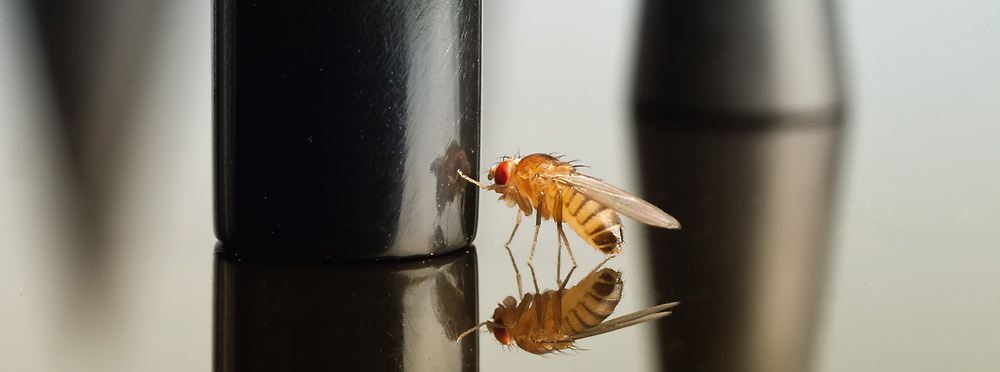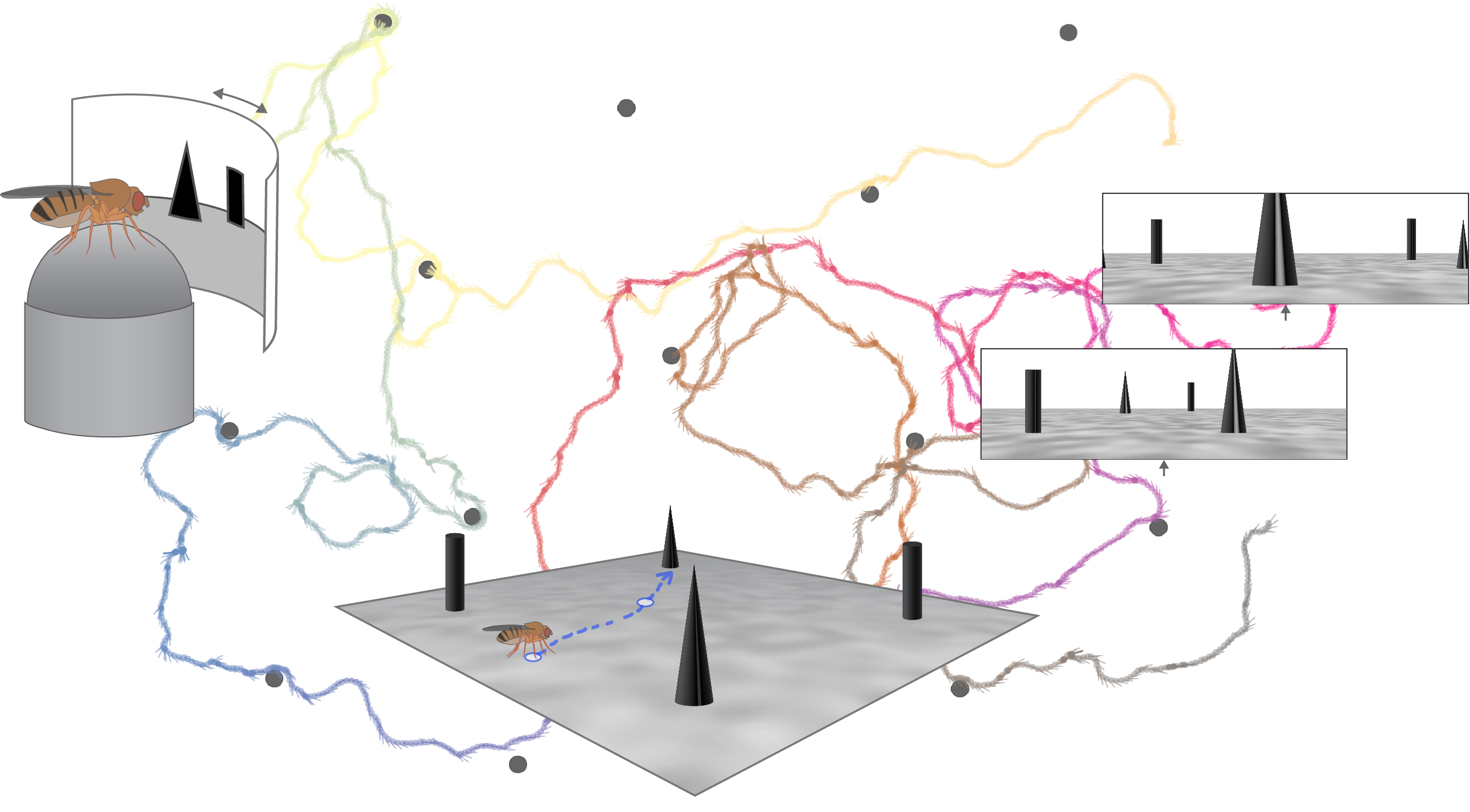
Currently I'm working on three different projects:
First, I’m combining a virtual reality system that I developed during my PhD (see below) with two-photon calcium imaging to investigate how flies stay oriented in dynamic and cluttered two-dimensional visual environments.
In a second navigation project I am working, in close collaboration with Dennis Goldschmidt from Carlos Ribeiro’s lab (Champalimaud) and Ann Hermundstad (Janelia), on understanding behavioral strategies and neural mechanisms underlying foraging decisions in flies.
In a third, also highly collaborative project, I’ve been analyzing the central complex connectivity using the recently published fruit fly connectome.
